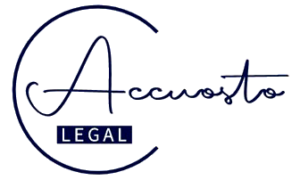The Wisdom of Crowds by James Surowiecki examines the theory that aggregated wisdom of everyday people can prove far more insightful and accurate than that of individuals acting alone, even if they are experts in the particular field. In the field of intellectual property it is the legal advisor who must create order from chaos by carefully sifting through mounds of data to identify the nuggets of gold.
In the online environment search engines do that job very well. Raw processing power and finely-tuned algorithms work in alliance to return results which are relevant. But if Google et al can identify what people are searching for amongst a wealth of information, can they also determine what is in the mind of the average consumer of trade mark law, the informed user of design law and patent law’s person skilled in the art? Might the technology giants be unwittingly sitting on a diamond mine of probative evidence?
Judge Google
In her thought-provoking paper, The Google Shortcut To Trademark Law, Lisa Larrimore Ouellette explores the application of crowd-sourced data to the resolution of tests under trade mark law, in particular those tricky assessments of distinctiveness and likelihood of confusion. Ms Ouellette argues that Google’s search results do a better job than the courts in evaluating consumers’ perceptions of trade marks. Of 88 cases studied the ‘Google shortcut’ agreed with the courts on 60 occasions.
The paper focuses on the US trade mark system which makes the equivalent European landscape appear very settled so it is easy to see the incentive for a consistent and objective analysis procedure. Whereas the Court of Justice’s decisions in Sabel, Canon, Lloyd and Medion, have afforded the European Union a degree of harmony in the application of the test of a likelihood of confusion, Ms Ouelette explains that the US suffers from thirteen federal circuit courts of appeals each with their methodology.
However, whilst it may be a nice idea, there are some significant shortcomings (as acknowledged in the paper) simply because Google does not have enough data. Results will be skewed, for example, where the marks have not been used at all or only offline, or where data are manipulated to improve search rankings, such as through search engine optimisation (SEO) techniques. In addition, the increasing prevalence of egocentric or personalised and geotargetted search as well as the transience of data, means it is hard to imagine that search results offer anything more than an imperfect indication.
Aggregated examination by trade mark registries
Trial by a jury of twelve men has existed in England for over a millennium. So even if the web’s data is too unrefined, the principle stands true that an answer formed from the aggregation of multiple opinions is more reliable than a single person’s.
The United Kingdom’s Intellectual Property Office has around 59 trade mark examiners of various levels of seniority and experience. The OHIM has 229. Generally the rule in both offices is ‘one file one examiner’, though there is consultation for ‘difficult’ marks. One wonders whether obtaining ‘snap’ decisions as to registrability from dozens of examiners and relying on the theory that man has the capacity to make good decisions instinctively, might improve the end result of the examination process.
In practice the UKIPO and OHIM seem to do a pretty good job of making the right call, and there is also the safety valve of an appeal and/or invalidity proceedings for those miscreant registrations which sneak through (such as RED for wine). For jurisdictions where examiners’ and judges’ training in trade marks law is less developed, aggregated examination could be worth a try. Who knows, maybe we will find a shortcut to trade mark law after all.
Robert Cumming


